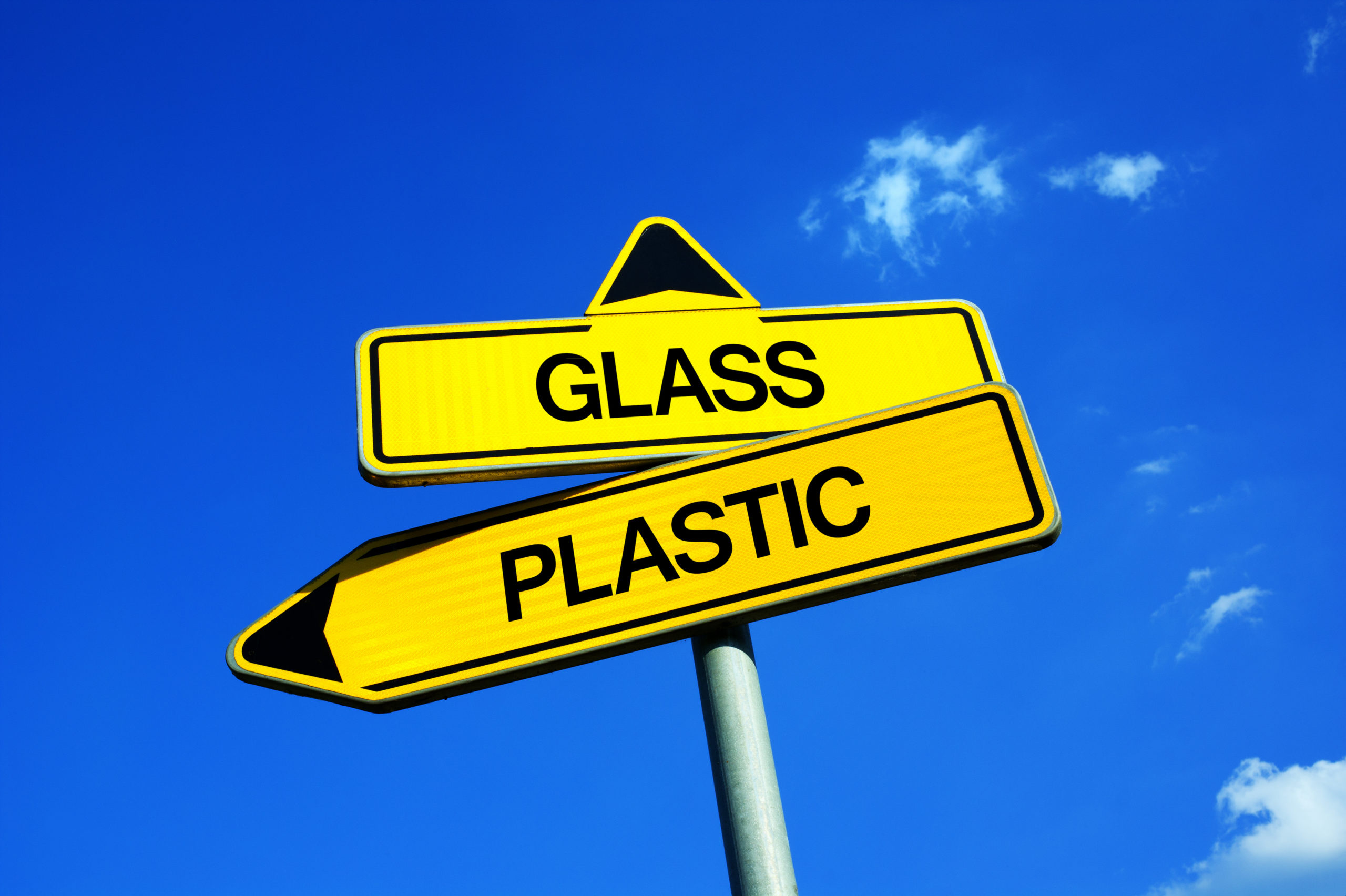
Glass vs Plastic
what’s best for the product, business and planet?
Since demand for ECO packaging transformed from fashion-enforced trend into nearly mainstream, the entire market is experiencing a huge congestion of various “GREEN”-labelled offers. All these offers and promises, though, have evoked just as much questions, controversy and even misunderstanding. Additionally, most of green and eco solutions still remain noticeably more expensive than those traditional. So when it comes to decide between the intent to save the planet and the desire to invest the least and yield the most, commercial interest usually wins. Yet shouldn’t we forget, that recycled or BIO polymer are not the only options to show some care about the ecology. A lot more can be done by choosing manufacturers that use waste-free, emission-free, low energy consumption production know-hows and 100% recyclable product design. Besides, long before Instagram saw the first integrations of bloggers promoting facial care brands in PCR, bio or other “green” plastics, we had already had the eco-friendliest packaging material ever – the glass. Conventional and “green” plastics as much as glass have armies of disciples, each with their own strong arguments. But who of them is closer to the truth?
Assumed quality
It’s been known for like fifty years now, that consumers subconsciously value glass-packed products higher than those in polymer containers. Those captivating heaviness and appearance of glass persuade us about the quality of what’s inside better than any ads and slogans, no matter which category of consumer goods it is – peanut butter or face cream. On the other hand, glass is fragile, especially with tile floors and kids nearby, while plastic is durable, flexible and gives a ton of room for design experiments. This, however doesn’t make glass a less preferable option. Sure, shampoos kids’ beverages are no good pair to glass bottles, but in most cases plastic container get chosen only because they’re cheaper.
Chemical properties
Glass is chemically inert and gas-impermeable, which makes the best option for drugs and volatile and critically sensitive to external factors formulas, alcohol and essential oils. Moreover, glass preserves its initial features in a significantly wider scale of thermal conditions and remains impassive to pasteurization. The strength on plastic, then, lies in its flexibility and adjustability. PET, polyethylene, polypropylene – each have their unique physical and chemical properties, so that it’s seems quite easy to find a fit for almost any kind of product.
Transoprtation
Transport is probably the gravest flow of glass because of high significantly higher expenses compared to plastic brought by its heaviness and fragility. And average 50ml plastic bottle weighs around 10g, while a similar glass one – 80g. Within one single unit product in a consumer’s bag the difference doesn’t seem so huge, yet when it comes delivering a palette or and entire cargo bin, things get serious. So, in this point of view plastic looks much more attractive by suffering no damage during long-distance either road or sea transport, saving a significant amount of fuel at the same time. That’s mainly one of the most-used argument of plastic packaging manufacturers emphasizing, that in the ecological meaning plastic appears more eco-friendly when it comes to transportation. We’ll se though, how things are going to change when electromotors will globally become a part cargo transport machinery.
Expenses
Not only glass transporting is more expensive, but it’s manufacturing, too, since glass manufacturing requires higher temperatures and therefore consumes more energy. That’s what things have looked like for decades. Technology, however, keeps going forward, and modern plants are now consuming a fracture of the precious amounts of energy, and keep developing energy-saving technologies and alternative energy sources.
ECO and recycling
Even though glass transportation and production is more expensive now – it won’t be like this forever. What’s most important, a more eco-friendly alternative to glass doesn’t exists, and we’re not expecting anything like this in the near future (and not-so-near future, too.) Glass is the only 100% recyclable and reusable material that doesn’t have to deal with quality downgrading – so-called downcycling. Ecological properties of plastic are drawing back lightyears away. We do have some PCR tube and bottles, but still 99,99% per cent of consumers’ plastic waste downgrades into low-quality industrial materials. Besides, recycling requires a wide-spread, well-maintained waste collecting infrastructure and extreme level of social responsibility shown by consumers themselves. Now, despite all the governmental initiatives, the majority of waste ends up in landfill. And even though glass also takes long and long years to decompose, the damage glass waste deals to the nature is close to zero – after all, it’s just a form of heated sand.

